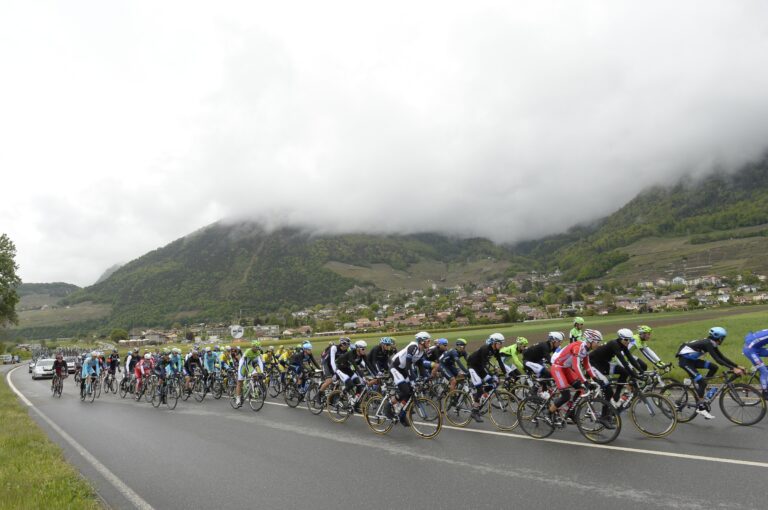Replacing a worn gear cable is essential to retaining the smooth function of a shifter and saving it from lasting damage.
Retrieving the snapped remains of a cable from a dual control lever is one of the lengthiest tasks a bicycle mechanic will face and can therefore be among the most costly for you, the customer.
Stiffness in the shifter can often be taken as an early warning sign that the cable is reaching the end of its useful life.
If you’ve decided (sensibly) to heed the warning signs, and to replace the cable, here are a few simple steps to follow, demonstrated by Jon Hayes, mechanic at independent bike shop, Ride.
Removing the handlebar tape is a necessary starting step. Often, it’s possible simply to peel off the old tape, but it may be necessary to cut it. The latter will certainly be required to remove the electrical tape typically used to hold the cables in place against the handlebar.
Having removed the tape, Jon turns his attention to the other end of the cable, and snips off the end cap from the cable at the rear derailleur. Having done, so he pulls the inner cable from it outer casing, and removes the section of outer casing at the lever.
He trims the inner cable, making it easier to remove, but leaves it in place, making it obvious where the new cable must be threaded.
“As you feed the cable out of the shifter, just take note of where it’s coming from,” Jon warns. “There are a lot of different holes and spacer on the shifter. Pay attention to that. It’s going to make life a lot easier when we come to feed in the new cable.”
Jon threads the new cable into place and, while pulling the cable taut with one hand, makes a few exploratory shifts to ensure the cable is correctly seated in the shifter.
Deciding on the correct length of outer housing is important to securing a smooth shift. While it’s possible to use the existing outer as a guide, this isn’t always satisfactory. Jon selects a length of outer and offers it to the shifter housing.
Holding the cable tightly against the front of the bar, he assess what length of outer is required to pass from shifter to down tube with smooth, flowing curves.
“We don’t want any sharp curves, or sudden changes in direction of the cable. Everything’s got to work with as little friction as possible. We’re looking to keep everything smooth with nice, gentle curves,” Jon says.
He also recommends turning the handlebars left and right to ensure the cable is sufficiently long to ensure that it does not impede steering.
Using a good quality set of cable cutters, Jon trims the cable and checks that the end of the cable is open. Jon takes a pick to ensure the inner cable can move without friction.
Satisfied that the outer is sufficiently opened to allow the inner to move without friction, he applies ferules – small caps that seal the cable from ingress of muck and water – to the shifter end of the cable.
Jon positions the cable inside the front brake calliper, reducing the distance travelled and the extent of the curve. “If we run it on the ouside it puts another curve into the system,” he explains, “and the more curves you have the more friction you’ll introduce.”
He positions the cable outer in the barrel adjuster at the top of the down tube, checking first that it is unwound slightly to ensure that he has some capacity for adjustment if required.
Electrical tape is the next item Jon reaches for, this time to secure the cable outer to the handlebar. “Just a couple of turns to keep things in place,” he advises.
He then threads the cable through the guide beneath the bottom bracket before turning his attention to replacing the section of cable outer at the rear derailleur. This time the existing piece is a good length and can serve as a guide for the replacement.
“Just turn the barrel adjuster out a couple of turns,” he advises. “This time you’ve got ‘space’ to go in either direction.”
Before threading the inner back inside the derailleur pinch bolt, Jon holds the cable taut, and ‘cycles’ through the shifter settings. Satisfied that the cable is correctly seated in the shifter housing, he tightens the derailleur pinch bolt with a 5mm Allen key.
“You’ll notice that we’ve placed inner and outer cables together,” Jon concludes. “It’s best to do that. You tend to find that if the inner cable is corroded or not on top form, the outer cable will be in the same condition. If you only replace one or the other – and normally it’s the inner that gets replaced on its own – you’re only doing 50 or 75 per cent of the job.”
The final task is known as ‘pre-stretching’ the cable, but this term may be considered misleading. The cables are likely to have been pre-stretched at the factory. The task is more commonly used to ensure the ferrules are securely ‘seated’ in their various housings.
Jon shifts the chain to the largest sprocket, pushes the lever to its furthest position, and physically pulls the cable. “Don’t’ go crazy – just put a little bit of weight behind it,” Jon advises. “Once that’s done, you can adjust the gears.”





